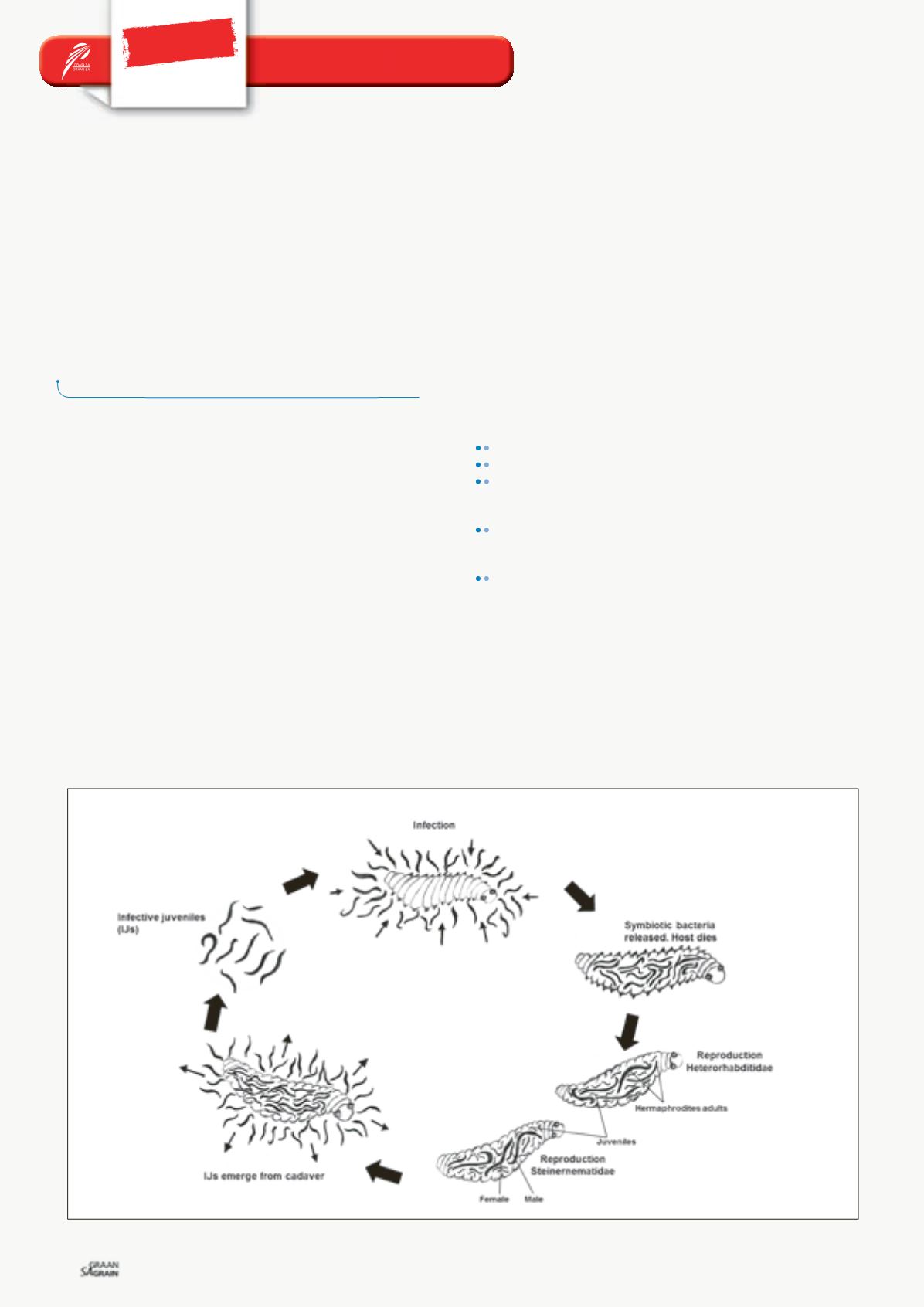

September 2015
40
FOCUS
Integrated pest control
Special
How compatible is entomopathogenic
nematodes
with other pest
management strategies?
E
ntomopathogenic nematodes belong to the genera
Stein-
ernema
and
Heterorhabditis
and have been successfully
used over decades as safe biocontrol agents for the manage-
ment of key agricultural pests.
Entomopathogenic nematodes are insect parasitic round worms,
naturally occurring in the soil environment, and they actually com-
prise a symbiotic nematode-bacterium complex. The nematode may
appear to be like a biological syringe for its bacterial partner (car-
ried by the nematode in the gut), which is unable to infect a host on
its own.
Nematode growth and reproduction depend upon suitable condi-
tions established in the host by the bacterium. Conversely, the bac-
terium lacks invasive powers and is dependent upon the nematode
vector to locate and penetrate suitable hosts. Entomopathogenic
nematodes kill their host within 48 hours.
Entomopathogenic nematodes are pathogenic to more than 200 in-
sect pests. However, confidence in the performance of entomopath-
ogenic nematodes has not yet reached a level or price at which they
compete directly with chemical pesticides.
Nevertheless, entomopathogenic nematodes fit well into integrated
pest management programmes for a number of reasons, such as:
They are compatible with a number of agrochemicals.
They can be applied with standard pesticide equipment.
They may be applied simultaneously with other control agents,
i.e. within a short interval of each other or conveniently by tank
mixing with other control agents.
There is no maximum residue level or entomopathogenic nema-
todes may account for reduced maximum residue level when
used in combination with chemicals.
Entomopathogenic nematodes are generally safe to labourers,
the crop, natural enemies and pollinators.
The infective juvenile stage of entomopathogenic nematodes has
proven to be compatible with many insecticides, nematicides,
herbicides, fungicides, fertilisers, growth regulators, surfactants,
pathogens, parasitoids and predators. In other instances, the
nematode may or may not interact with these other agents with
the relationship ranging from synergetic to antagonistic. Many
combinations of entomopathogenic nematodes with other control
agents proved to produce better control results than when using
either agent alone.
TSHIMA RAMAKUWELA,
ARC-Small Grain Institute, Bethlehem
Figure 1: Life cycles of entomopathogenic nematodes.

















